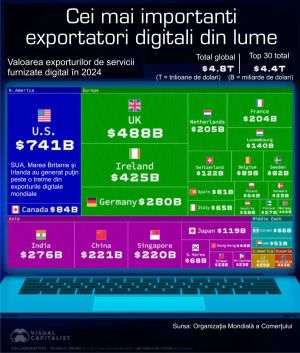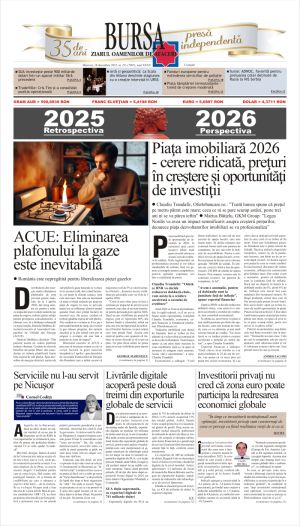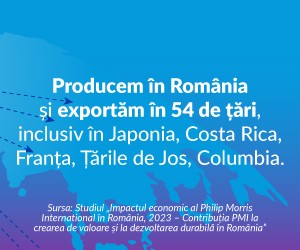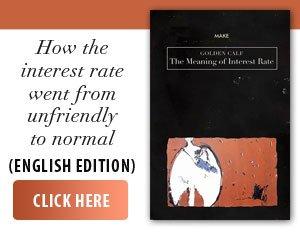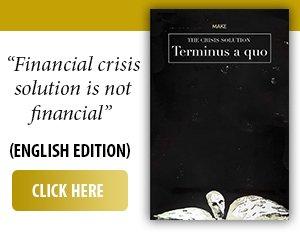Western hegemony - primarily the U.S., but also the EU - is being challenged and besieged by China, backed by the BRICS bloc and part of the Global South, which promote multipolarity as an alternative. Pressure also comes from states hit by the hegemon's abuses - the arbitrary tariffs of 2025, threats of 100% sanctions, U.S. threats of territorial seizures (Canada, Greenland, Panama), and the use of the dollar as a weapon. In this context, the question is how likely the enforcement of multipolarity is and within what timeframe it could become a reality.
• 1) Probability of Multipolarity Taking Hold
• a. Arguments in favor of multipolarity
- Erosion of American supremacy
The huge public debt and the contestation of dollar dominance (BRICS initiatives, energy contracts denominated in yuan, local-currency transactions among Asian states) weaken Washington's traditional levers.
- The rise of China
China's GDP, calculated at Purchasing Power Parity (PPP, a method adjusting for price differences), has surpassed that of the U.S.; its commercial, industrial, and technological weight is increasing. The Belt and Road networks connect Asia, Africa, and Europe, creating new dependencies.
- The reaction of other poles
India asserts its strategic autonomy; the EU seeks "strategic autonomy”; Russia is economically aligning with China; in the Global South, states exploit great-power competition to secure better terms.
- Abuses of the hegemon
The generalized tariffs of 2025, threats of 50-100% tariffs against China/India, and the use of the dollar as a financial weapon accelerate the search for alternatives.
• b. Arguments against multipolarity
- American military power
The network of bases and alliances (NATO, AUKUS, Japan, South Korea) has no equivalent.
- The power of the dollar
Around 60% of global foreign exchange reserves remain in USD; the depth and liquidity of U.S. markets are difficult to replace.
- Fault lines among the "new poles”
China-India rivalry, Russia's economic dependence on Beijing, and the EU's hesitations and fragmentation complicate the formation of a coherent anti-hegemonic bloc.
- Institutional inertia
The UN, IMF, World Bank, and global payment systems still operate within an architecture where the West holds major levers.
- Estimate
Multipolarity has a 50-60% chance of establishing itself as the dominant model in the medium term: more likely than the maintenance of a classic unipolarity, but far from inevitable.
• 2) Timeline
- Until 2030 (0-5 years)
Multipolarity largely remains a matter of contestation and repositioning: "mini-blocs” emerge (BRICS+, ASEAN, Gulf states); the U.S. can still impose unilaterally, but faces stronger resistance.
- 2030-2040 (5-15 years)
Functional multipolarity, if the dollar's share of reserves falls below 50% and local-currency transactions become the norm for major economies (China, India, Brazil).
- After 2040
Either a multipolar concert with rules negotiated among poles, or a conflictual multipolarity if regional rivalries escalate.
The main consequences of the shift to a multipolar international order should be tracked in the fields of:
- Geopolitics;
- Economics;
- Military affairs;
- Culture and ideology.
• 3) Geopolitical - from one decision center to a network of centers
After 1945, Washington was the gravitational center of global decision-making. A multipolar scenario would break this monopoly: Beijing would dominate the Asia-Pacific; New Delhi would weigh decisively in South Asia; a Eurasian axis with Moscow would project power in its neighborhood; Brazil would claim the role of Latin American hub; Ankara and Riyadh would play balancing roles in their respective regions.
Universal organizations do not disappear, but become arenas of competition. BRICS is not an international organization in the sense of the UN/IMF, but a bloc of states aligning positions and creating instruments (New Development Bank, their own payment mechanisms). In parallel, the new poles try to exert influence from within: appointments to lead UN agencies, pressure for higher voting shares in the IMF/World Bank, promotion of norms such as "non-interference” or "digital sovereignty.”
Europe oscillates between reliance on the American security guarantee and the interest of avoiding trade wars and technological ruptures with Asia. The result: a fragmentation of the decision center into regional nodes that check and block one another.
• 4) Economic - the dollar, 2025 tariffs, and supply chain reconfiguration
The global economy has been anchored in the dollar. The contestation of this supremacy advances through local-currency payments, energy contracts in yuan, larger gold reserves, and the emergence of alternative payment systems. This is not an overnight replacement, but a gradual erosion of the monopoly.
The 2025 tariffs marked the rupture. Through an executive order ("Liberation Day”), average tariffs jumped to about 18.6% - the highest since the Great Depression. India was hit with tariffs of up to 50%, and Canada and Mexico with 25%, sometimes for non-commercial reasons (immigration, drugs). A significant part of the regime was later struck down in court (V.O.S. Selections, Inc. v. Trump), but the message remained: the hegemon can trigger global shocks with a single executive act.
Subsequently, threats of 50-100% tariffs were leveled at China and India, linked to imports of Russian oil - a sign that trade tools are becoming strategic weapons.
In parallel, Washington is trying to secure its supply chains:
- Reducing dependence on rivals (so-called "de-risking”);
- Bringing production back home (re-shoring) or moving it to allied countries (friend-shoring);
- Stricter export rules for sensitive technologies (microchips, advanced equipment);
- Screening of inbound and outbound investments to block security risks.
In response, the new poles are building alternative trade and logistics routes (Eurasian corridors, strategic ports), fueling sovereign funds for financing "without political conditionalities,” and promoting their own technical standards (in telecoms, payments, energy). Step by step, world trade is segmenting into parallel blocs, with costs rising as rules become increasingly politicized.
• 5) Military - between "Pax Americana” and mutual deterrence
"Pax Americana” delivered stability as long as the hegemon's interest dictated restraint. When it chose intervention (Vietnam, Iraq, Afghanistan), there was no real counterbalance. In a multipolar world, deterrence is distributed: each pole weighs the costs of others' potential reactions.
The predictable hot theaters are: Taiwan/Formosa Strait and the South China Sea (maritime control, A2/AD), the Black Sea/Eastern Europe, the Middle East and the Horn of Africa, the Sahel. The character of war is changing: drones, hypersonic missiles, electronic warfare, cyberattacks, the "grey zone” (sanctions, sabotage, mercenarism). Classical alliances (NATO, AUKUS) coexist with ad hoc arrangements among non-Western powers.
The world does not become more peaceful, but it becomes harder to dominate unilaterally. "Regime change” interventions thousands of kilometers away will be rarer; instead, regional crises may become more frequent but containable through local balances.
• 6) Cultural and ideological - from universalism to competition among models
After 1945, the West imposed "universal” standards (liberal democracy, human rights, market economy). Their selective application and use as political levers eroded the credibility of this narrative.
Multipolarity legitimizes pluralism:
- China speaks of "social harmony” and development without political conditionalities;
- Russia pushes a "civilizational” discourse;
- India promotes a democracy with its own specific features;
- Islamic states invoke cultural sovereignty.
Media platforms, technological standards, and digital rules become battlegrounds of ideological competition. The idea of rights does not disappear, but it enters a global marketplace of competing models. No single actor can dictate the "universal truth” anymore.
• Conclusion
Multipolarity is not a guarantee of peace or prosperity. It brings fragmentation, higher costs, and regional rivalries. But unlike hegemony, it provides an antidote to concentrated abuse: no leader - however irresponsible - can single-handedly decide the rules of the global game anymore. Looking at current trends, the chances (50-60%) that multipolarity will become the dominant model by around 2035-2040 are real. It is not the "end of the West,” but the end of its exclusivity as the sole arbiter.
A universal truth likely does not exist as a model of human organization beneficial regardless of a place's specific conditions, customs, or times. From this perspective, multipolarity seems more realistic, while organization under a hegemony is decidedly flawed.
• Glossary of Terms (for the busy reader)
PPP (Purchasing Power Parity): method of comparing GDPs that takes into account price differences between countries.
IEEPA (International Emergency Economic Powers Act): U.S. law allowing the declaration of an "economic emergency” and the imposition of trade/financial restrictions.
CIT (Court of International Trade): U.S. court for customs/trade disputes; in 2025 it struck down parts of the tariff package.
Federal Circuit: federal appeals court with jurisdiction over CIT decisions; it upheld the annulment of many 2025 tariffs.
EO (Executive Order): U.S. presidential directive with regulatory effect; EO 14257 ("Liberation Day”) introduced the 2025 tariffs.
NDB (New Development Bank): development bank created by BRICS states (2014), a partial alternative to the World Bank.
AIIB (Asian Infrastructure Investment Bank): multilateral bank initiated by China (2016) to finance infrastructure.
De-risking: reducing dependence on suppliers/rivals perceived as political or security risks.
Re-shoring: bringing industrial production back to the home country.
Friend-shoring: relocating production to allied/trusted countries.
Investment screening: reviewing inbound/outbound investments to block acquisitions or technology transfers considered risky.



